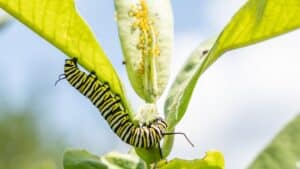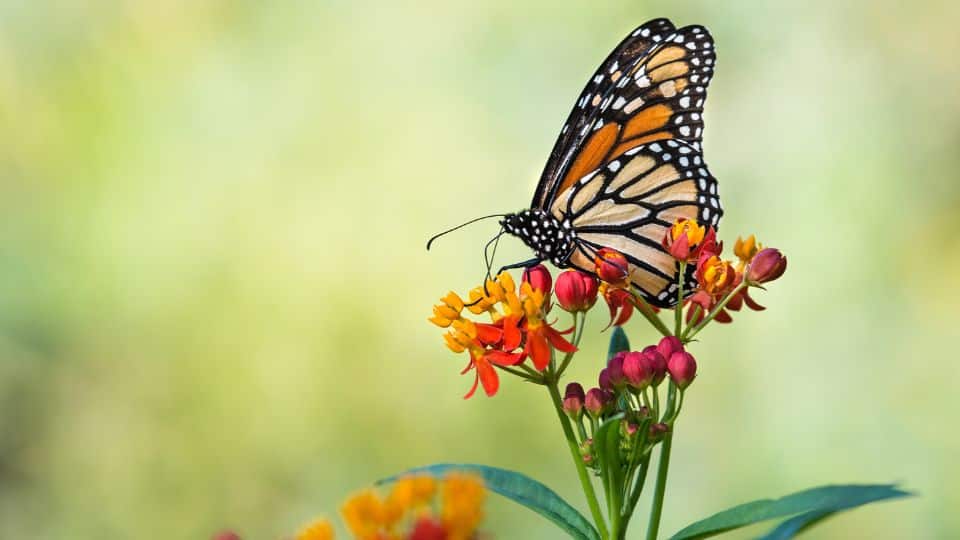
A Bitter Surprise: Aphids Threaten Monarch Butterfly Lifeline
Monarch butterflies, with their vibrant wings and epic migrations, have captivated hearts for generations. Sadly, their populations have plummeted in recent decades due largely to habitat loss. In response, many people have turned to planting milkweed, the monarch’s exclusive food source, in their gardens.
One readily available option is tropical milkweed (Asclepias curassavica). This hardy Central and South American variety boasts several advantages: it’s fast-growing, easy to cultivate compared to native milkweed, and thrives in the winter nesting grounds of Mexico. No wonder it’s the most commonly available milkweed sold in the United States. However, a recent study from the University of Florida throws a wrench into this seemingly perfect solution. It reveals a hidden danger lurking on these tropical beauties: oleander aphids. These tiny sap-sucking insects may seem insignificant, but for monarchs that rely on tropical milkweed, they can spell disaster.
The study found that tropical milkweed infested with oleander aphids became significantly less hospitable to monarchs. Butterflies laid far fewer eggs on aphid-ridden plants, and the caterpillars that did hatch faced a tough battle. They munched on less milkweed, grew at a slower pace, and many never reached adulthood.
This is a double whammy for monarch conservation. While tropical milkweed provides a convenient option for gardeners, it seems aphids find it particularly tasty. The study suggests that native milkweed species, which are less susceptible to aphid-induced problems, might be a better choice for those who truly want to help monarchs.
A Bitter Defense: Here’s the twist: when tropical milkweed is under attack by aphids, it fights back by producing higher levels of chemicals called cardenolides. These
However, there’s a catch-22 for monarchs. While they rely on cardenolides from milkweed for their own protection against predators, too much of a good thing can be bad. The study suggests that the elevated cardenolide levels in aphid-infested tropical milkweed may deter monarch butterflies from laying eggs and make the milkweed less nutritious for the caterpillars that do hatch. This can lead to slower growth and even death for the young monarchs.
Alternatives: The researchers found that monarchs did much better when feeding on native swamp milkweed with its lower levels of cardenolides even when heavily infested with aphids. But don’t despair if your heart is set on tropical milkweed! The researchers offer a glimmer of hope. For smaller gardens, insecticidal soap can be used to control aphid populations, making the milkweed more welcoming to monarchs. So if you are set on the Tropical milkweed and your favorite garden center supply is infested with aphids share this information with them and encourage them to minimize their aphid population.
The study’s authors are exploring alternative pest management solutions that target aphids but leave monarchs unharmed. This research reminds us that even well-intentioned efforts can have unintended consequences. Also be sure to cut back your tropical milkweed in the Fall to encourage monarchs to migrate back to Mexico and avoid the Ophryocystis elektroscirrha (OE) protozoan infestation that ravages the health of over wintering monarch populations. By understanding the complex interactions between plants, insects, and butterflies, we can make informed choices to create a healthier future for these magnificent creatures. So next time you plant milkweed for monarchs, consider the potential aphid threat and choose the best option for your garden and these winged wonders.
From our office in Atlantic Beach and satellites throughout Northeast Florida, Rockaway Inc proudly serves both commercial and residential sustainable landscape design, maintenance, lawn care, irrigation, and outdoor living carpentry client needs in Jacksonville, St Augustine, Atlantic Beach, Neptune Beach, Jacksonville Beach, Ponte Vedra, Nocatee, St. Johns, and Fernandina Beach.
